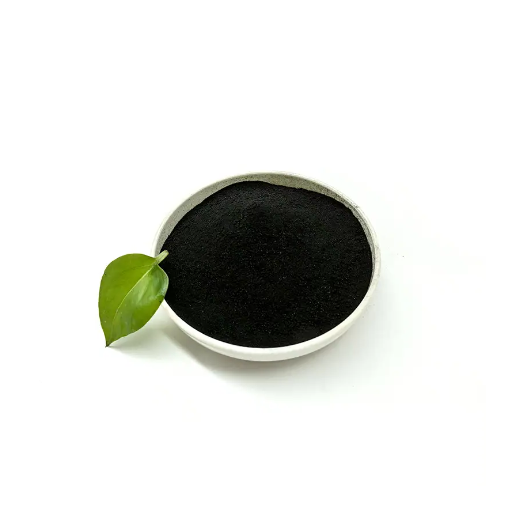Potassium humate powder is revolutionizing modern agricultural practices by offering a natural and efficient solution to improve soil fertility and crop productivity. Derived from the humic substances found in leonardite or lignite, this powerful organic fertilizer enhances soil structure, boosts nutrient absorption, and promotes sustainable farming. Whether you’re a commercial grower seeking higher yields or a home gardener aiming for healthier plants, understanding the science and benefits of potassium humate powder is key to achieving your goals. This article will explore how potassium humate works, its application methods, and the advantages it provides in fostering resilient crops and dynamic soil ecosystems.
Benefits of Using Potassium Humate in Agriculture
Enhancing Nutrient Absorption
Potassium humate plays an important role in enhancing nutrient uptake by the plants. It works by improving soil properties such as CEC, whereby essential nutrients like nitrogen, phosphorus, and potassium can be physically attached to soil particles before being absorbed by plant roots at specific stages of plant growth in favorable conditions.
Besides, there are humic acid contents in potassium humate, which chelate micronutrients such as Fe, Zn, and Mn. This chelation makes them biologically available for plant uptake. It prevents their leaching, keeps soil fertility at a higher level over time, and hence results in better plant development and enhanced crop yields.
The use fosters the growth of the roots by improving soil structure so that the roots find a more adequate environment to access water and nutrients. Potassium Humate-enhanced root system absorbs the maximum possible and provides resistance to the plant against environmental stressors like drought and nutrient deficiencies. This makes Potassium Humate an indispensable aid for sustainable and productive agricultural practices.
Boosting Soil Fertility and Health
Organic matter builds reservoirs in the soil for the essential nutrients: nitrogen, phosphorus, and potassium, and the soil absorbs those nutrients. If those nutrients are bound to water molecules through an exchange reaction, then organic matter will counteract the process of leaching, and nutrients will be constantly supplied over time to plants, resulting in a better crop yield that is healthy and sustainable.
Moreover, organic matter would maintain and enhance soil structure. Water infiltration and aeration are very impaired when the soil structure is diminished. Those are the natural conditions that allow root growth. When there is adequate organic matter, a good microbial community is supported. Nutrient cycling is helped by the action of microbes in breaking down complex organic compounds into forms that can be taken up by plants.
The general principle is to improve soil fertility and health in the long run by increasing organic matter content. Increases in organic matter levels come primarily through incorporation of cover crops, compost application, or reduced tillage. These processes enhance soil quality and also sustain agricultural systems so that they continue to produce crops for the next generation.
Encouraging Sustainable Farming Practices
Sustainable farming is an important practice to ensure long-term agricultural productivity while also ensuring minimal environmental impact. One such approach embraces crop rotation to minimize soil depletion and break pest cycles. Saying this in other words, by having crops that require varying nutrients or work differently in terms of various mediums, it allows the farmer to take care of soil fertility through natural means, while minimizing the use of fertilizers and other chemical substances.
Integrated pest management (IPM) has been introduced as one of the key practices. It seeks to apply biological, cultural, and mechanical methods of pest control and minimize the use of chemical pesticides. In an IPM program, approaches could include the use of natural predators, introduction of crop varieties resistant to pests, and the use of crop monitoring systems.
In addition, water conservation techniques must be a key element of sustainability. Efficient water use with waste minimization is assured through such means as drip irrigation, rainwater harvesting, and soil moisture sensors. Farmers would have to adapt better to changing climatic conditions with these practices through increased water availability, the World Resources Institute concludes. Across all these methods, sustainable farming provides resilience, minimizes environmental degradation, and supports food security for generations to come.
Improving Soil Characteristics
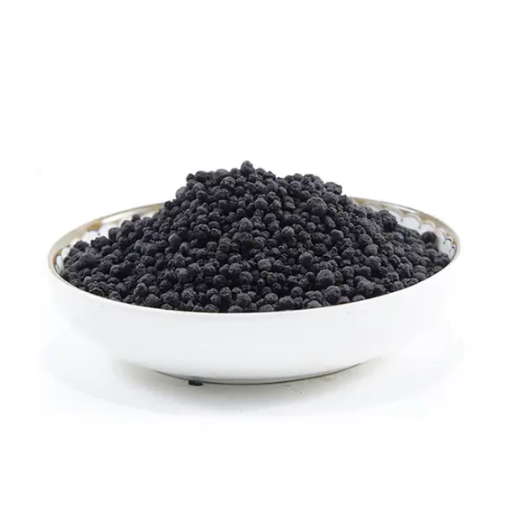
Increasing Microbial Activity
Increasing microbial activity in the soil goes a long way in improving soil health and fertility. Soil microbes include bacteria, fungi, protozoa, and actinomycetes, which play all major roles in nutrient cycling, organic matter breakdown, and maintenance of soil structure. Conversion of organic residues by these organisms so that nitrogen, phosphorus, and potassium-essential nutrients-are released into the soil for uptake by plants is their primary function. Application of compost, cover crops for the soil, and no-till practices tend to add organic matter and provide a conducive environment for microbial colonization and rapid growth.
Advanced inoculants are currently used in modern agriculture for soil microbial populations’ enrichment. Facilitated by these natural products, microorganisms beneficial to plants may be introduced into the soil, such as nitrogen-fixing bacteria (Rhizobium species) and mycorrhizal fungi; the fungi establish a synergistic association with plants. Mycorrhizal fungi increase phosphorus uptake and stimulate roots, thus extending the root surface area with hyphal networks. Scientific reports note that inoculants applied to soils may increase crops’ yield by as much as 20%, thus decreasing dependence on chemical fertilizers. Hence, precision agriculture, with real-time soil monitoring through biosensors, can gather relevant data toward a scientifically feasible manipulation of microbial activity.
Avoid mispronunciations that damage microbial health, as it runs equallyˆwith mitigation. High fertilization, pesticide application, and soil compaction force compatibility, or they disrupt microbial populations and their diversity. Organic amendments like biochar and vermicompost would give counteraction to these adverse reactions by improving soil organic carbon key energy source for soil organisms. Farmers will then nurture a resilient, thriving microbial ecosystem that will sustain the production of land for farming by simultaneously embracing organic enrichment, microbial inoculants, and precision monitoring within a systems-based approach.
Enhancing Water Retention Capabilities
In order to enhance water retention in the soil, I follow a meticulous and scientific approach to achieve a sustainable solution. One of my main techniques involves the addition of organic materials like compost, biochar, and crop residues. Such materials act in improving soil structure and water retention capacity through increased pore space. To cite an example, biochar raises pore space to the extent that there is enhanced water infiltration while surface runoff is reduced-too important in water management during weather extremes.
My special inclination goes towards adopting some cover cropping systems to complement these organic amendments. Cover crops like clover and rye prevent erosion, while, at the same time, they enhance natural soil-water storage by keeping a certain soil structure and minimizing the rate of evaporation. The root system of these crops facilitates water infiltration through earth channels while depositing organic matter into the soil. This way, water retention becomes more sustainable health of the soil is dependent on water management.
And finally, the principle of precision agriculture. Using computer-based monitoring of irrigation schedules, I make sure water deliveries best fit the actual needs of the crops and that wastage is minimal. An example of a tool would be the soil moisture sensors that allow real-time monitoring of moisture level change to offer me an insight to action the water input accordingly. This organic, biological, and technological intervention along these lines offers a strategic backdrop where water resource development is viewed long-term and in tandem with agricultural productivity.
Reducing Soil Erosion
Soil erosion control is important in retaining agricultural production and environmental integrity. Soil erosion takes place when the top layer of soil, considered the most fertile and rich in nutrients, is lifted away by the wind or water, or even agricultural practices. This discharge and deposition of topsoil results in a reduction in soil-nutrient status while giving rise to sedimentation in water bodies, creating environmental problems like water contamination and habitat destruction. In order to adequately control erosion, one needs to address it by adopting best agricultural practices with new technology and sustainable land management.
Some of the very best methods for preventing soil erosion are conservation tillage. Such methods include no-till or reduced-till farming, where soil disturbance is minimized, such as leaving crop residues on the field surface. This minimizes erosion by improving soil structure. Planting cover crops can provide a protective blanket of vegetation that keeps the soil from being blown or washed away while also enhancing organic matter. Other techniques, such as terracing and contour farming, are commonly used to regulate water flow and minimize runoff on the sloping land.
Technological upgradation has improved mitigation measures for soil erosion. Geospatial tools like the Geographic Information System (GIS) provide accurate mapping of erosion-prone areas for targeted intervention. Satellite imagery and real-time monitoring systems deliver data on vegetation cover, soil moisture level, and weather patterns that help take preemptive actions or build up predictive modeling. Integrating such advanced approaches with conventional soil conservation techniques can greatly help land managers in reducing erosion risk, thereby promoting land productivity and sustainability.
Application Methods for Potassium Humate
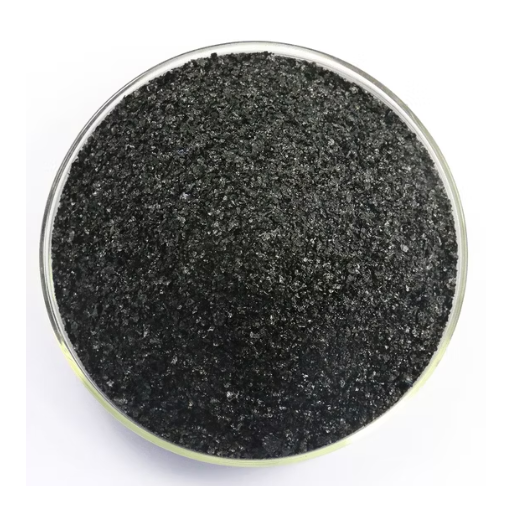
Effective Foliar Spray Techniques
Thus, foliar application allows for the quick supply of nutrients to foliage by preventing soil entrainment of such nutrients. A homogeneous solution is made by dissolving the required amount of potassium humate in water, observing the manufacturer’s dilution recommendations to achieve the best results. Spray equipment needs to be finely calibrated to deliver the solution evenly on the leaf surface for maximum absorption and minimum wastage. It is advisable to apply the solution in the early morning or late afternoon to avoid quick evaporation, allowing absorption of nutrients for a longer period of time.
Some studies reveal the effectiveness of nutrient foliar spray in establishing nutrient application regimes under conditions where plant growth might be affected by restricted nutrient availability in soil, as in the case of alkaline or compacted soils. Foliar application of potassium humate has been found to elevate photosynthetic efficiency, sustain metabolic processes, and enhance the yield potential of crops. Also, by facilitating the uptake of other key nutrients, including nitrogen and phosphorus, it becomes a synergistic component in an integrated fertilization program. Two-fold field trials have demonstrated average enhancement in various plant growth parameters by 15-30% under systematic foliar application of potassium humate.
For peak efficacy, the application procedure must take into consideration various environmental factors such as wind velocity, humidity, and temperature, which contribute to drift and absorption of the solution; advanced spraying technologies, such as low-drift nozzles and precision-controlled equipment, can be used for improving application accuracy and uniformity. Ensuring the proper handling and periodic calibration and maintenance of the spray equipment will guarantee the equipment’s performance will remain fairly consistent, notwithstanding the respective agricultural setting. This technical approach, mingled with the locus-specific demands of the crops, will enable the growers to reap the maximum benefits of potassium humate, thus ensuring sustainable agricultural productivity.
Soil Mixing Best Practices
Good soil mixing is indispensable for good crop production; nutrients, organic matter, and moisture need to be well distributed throughout the growing medium. An otherwise evenly mixed soil will aid root penetration and foster microbial activity as well as provide good water retention. To ensure proper mixing for large-scale operations, the soil should be considered to have amendments such as compost, fertilizers, and moisture-retention agents evenly mixed in by mechanical mixing equipment like rotary tillers or paddle mixers.
The soil’s texture and structure must be considered carefully during the mixing process. For example, sandy soils may need to be amended at higher rates with organic materials for improved nutrient-holding capacity, whereas clayey soils require loosening agents to curb compaction. Frequent testing of soil pH and nutrient levels through reliable laboratory methods can guide the respective amendments and adjustments during mixing for tuning environmental factors toward crop-specific demands.
Advanced technologies consisting of automated soil preparation systems integrated with real-time data analytics negate the need for manual analysis of large-scale mixing operations. These systems permit operators to preprogram the ideal mixing ratios in terms of historical data and site-specific data, thus limiting human error and enhancing efficiency. A merger of these methods, with constant soil monitoring and successive soil management, would sustain the working productivity and sustainability of both conventional and controlled-environment agricultural systems.
Utilizing Drip Irrigation for Optimal Results
Drip irrigation is one of the most advanced agricultural methods. It accurately delivers water to the roots via valves, pipes, and emitters. Such systems prevent water from evaporating and surface runoff. Hence, it is considered the best irrigation method. An effectively designed and operated drip irrigation system can achieve up to 90% efficiency in water utilization, while sprinkler or furrow irrigation loses a major portion of water through evaporation and percolation. It also avoids overwatering, which can cause problems related to root diseases or soil salinization.
Smart drip irrigation is a fully automatic water-management technique for agriculture. A smart irrigation system controls its operations via real-time data that comes from a variety of sensors-locally in the fields for soil moisture, from meteorological stations that monitor microclimates for temperature, humidity, and rainfall forecast-and these parameters regulate water generation dynamically. This ensures that water-irrigation optimization is possible and that crops receive the amount of water they require at different growth stages. According to research, fertigation based on drip irrigation may enhance crop yield from 20 to 50 percent, depending on the method of cultivation and environmental conditions.
Therefore, applying drip irrigation does have serious sustainability implications. By this option, farmers can produce crops under the condition of diminishing water availability in arid and semi-arid zones; this is therefore indeed a food-security issue for a water-scarce area. Research studies have suggested that if still practiced at a greater scale, drip irrigation could limit 30 to 40% of water consumption in agriculture worldwide and thereby tackle water scarcity and climate-change issues. Yet, the initial investment cost and the cost for upkeep remain hurdles for many small-scale farmers, and hence, subsidies coupled with awareness programs have to be targeted toward the promotion of this technology. With the infusion of new technologies and a set of conducive policy instruments, drip irrigation can become one of the cornerstones in efforts that will transform agriculture worldwide into that of sustainable intensification.
Dosage and Packaging Considerations
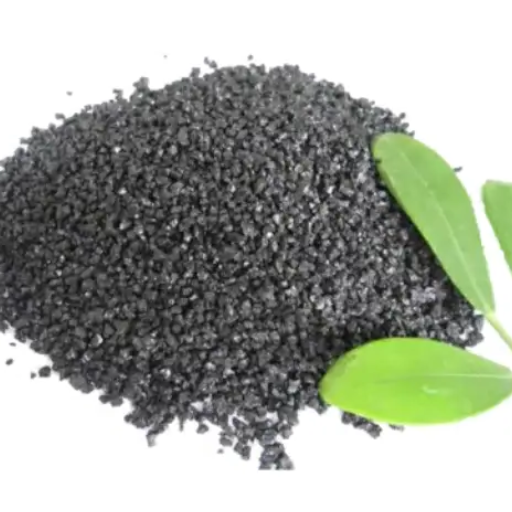
Determining the Right Dosage for Different Crops
The dosage of water and nutrients should be determined very accurately for optimum growth of crops, production of maximum yields, and to minimize the wastage of resources. Dosage requirements differ markedly according to the crop species, soil conditions, climate, and growth conditions. For instance, crops with high-water demands like tomatoes and cucumbers require moisture constantly throughout the growth cycle, while drought-tolerant crops such as sorghum or millet grow well with lesser irrigation.
An array of advanced sensors for moisture in soil, evapotranspiration data, and crop modeling tools is helpful in specifying the dose of water and nutrients. For instance, evapotranspiration calculation uses a combination of local temperature, wind speed, solar radiation, and humidity data to forecast the water needs of the crops with high accuracy. Nutrient dosage, in contrast, can be based on the results of soil tests that detect and check for macro and micronutrient deficiencies so that fertilization is applied to the crop’s actual needs.
Other studies stated the enhancement in effectiveness in the utilization of resources by aligning with the phenological stage, such as flowering, fruit development, and ripening. Hence, nitrogen might be most essential during early vegetative stages for leafy vegetables, while potassium would be most crucial during fruiting stages for crops such as bell peppers. In attaining these objectives, farmers may resort to practicing precision agriculture, reducing their input costs and, at the same time, lessening environmental damage caused by the overuse of water and fertilizers.
Choosing the Right Grade of Potassium Humate
Selecting just the right grade of potassium humate is the most crucial factor to ensure maximum application of crops and soil health. Potassium humate comes in many formulations, ranging from powder and granules to a liquid, all of which are tailored to different agri-applications. The most recommendable one depends much on soil type, crop specifics, and lately observed nutrient deficiencies.
In salt spray applications, the liquid potassium humate would be the best choice since it dissolves completely, allowing the nutrients to be received quickly. Granules, however, absorb nutrients at a slower rate and are thus better suited for generous applications or soils with a high concentration of leaching. The concentration of humic and fulvic acids also dictates much, as a higher concentration is known to facilitate better chelation of micronutrients and greatly improve their cation exchange capacity.
Studies scientifically confirm potassium humate’s usefulness in improving soil structure, encouraging microbial activities, and making essential nutrients readily available. For instance, studies demonstrate that potassium humate may have potent positive measures in sandy soil management by greatly increasing water retention capacity, decreasing salinity stress, and encouraging root growth. It is therefore necessary for farmers to perform soil analysis tests and consult with agronomists who will advise on the appropriate grade and application rate suitable for their farming systems.
Comparative Analysis with Other Fertilizers
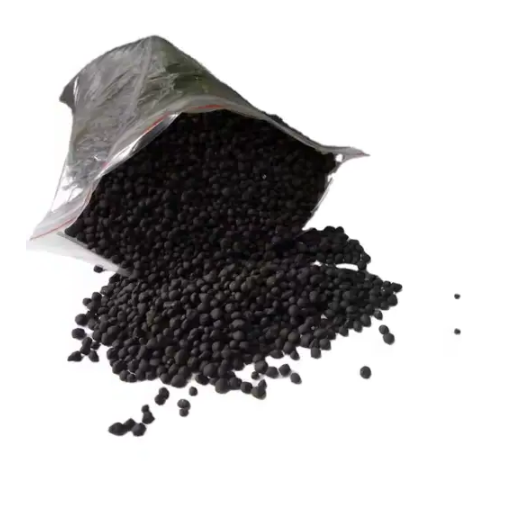
Advantages of Potassium Humate as an Organic Alternative
Potassium humate is essentially an organic soil amendment with many agronomic benefits and advantages when juxtaposed with chemical fertilizers. Five detailed benefits are listed below:
- Nutrient Uptake Efficiency Enhancement: Potassium humate helps chelate the necessary nutrients, ensuring them to be available and absorbable by plants. Research proves that nutrient uptake was increased by 20 to 30% in crops treated with potassium humate, while those treated with chemical fertilization alone are set as the baseline.
- Soil Structure and Water Retention: Humic substances such as potassium humate enhance soil aggregation, thereby increasing porosity and water retention. This is especially so for sandy soils, where they can experience an increase in water-holding capacity of approximately 50% after potassium humate application.
- Less Reliance on Fertilizers: It enhances nutrient efficiency to reduce reliance on synthetic fertilizers by 10-25%. However, this not only saves the money of the farmer but also lessens the environmental side effects of the farming practices.
- Mitigation of Soil Salinity Stress: By binding sodium ions, potassium humate helps negate the effects of excess salts in the affected soils and prevents their absorption by host plants. It therefore maintains their productive abilities, keeping plants vigorous. Research has proven that salinity stress can be reduced in plants by almost 40% upon application of potassium humate.
- Promoted Plant Growth and Yield: Below the category of a biostimulator, potassium humate promotes the growth of plant roots and shoots and the metabolic activities of plants. Yield enhancement of 15-25% has been reported in the field trials for wheat, corn, and vegetables with potassium humate inclusions in fertilization programs.
The positives make potassium humate stand as a sustainable and environmentally-friendly alternative to regular fertilizers, meeting the twin aims of food production and environmental conservation.
Cost-Effectiveness Compared to Traditional Fertilizers
In fact, potassium humate is considered to be greatly valuable for its long-term benefits that include improving soil health, reducing fertilizer usage, increasing crop yield, and fostering environmental sustainability.
|
Key Point |
Potassium Humate |
Traditional Fertilizers |
|---|---|---|
|
Soil Health |
Improves long-term |
Degrades over time |
|
Nutrient Use |
Enhances efficiency |
Quick but inefficient |
|
Yield Impact |
Boosts significantly |
Immediate but short-lived |
|
Environmental |
Eco-friendly |
High pollution risk |
|
Cost Over Time |
Reduces inputs |
Increases inputs |
Environmental Benefits of Using Potassium Humate
The environmental advantages of potassium humate are great due to its strengthening action on soil structure and, therefore, on the lesser need for synthetic fertilizer. Potassium humate increases soil organic matter content, fostering vigorous beneficial microbial activities that are vital for nutrient cycling and soil health in the long run. This biological process limits nutrients from being washed into water bodies, therefore, causing less water pollution and eutrophication. Also, potassium humate helps the process of carbon sequestration by improving a number of soils with organic carbon and ultimately mitigating the effects of greenhouse gases.
Potassium humate is an environmentally-friendly product with a minimal ecological impact, in stark contrast to traditional fertilizers, which tend to contaminate through chemical runoffs. Sites with potassium humate application witness increased water retention capacity, and due to this, irrigation is reduced, thereby conserving precious water resources. Also, it stabilizes soil pH and hence is highly featured in alleviating adverse effects caused by soil salinity and acidity. This is usually posed as a challenge in intensive agricultural activities.
Through the use of this highly flavored potassium-humate, agricultural systems will tread further on the path of sustainable agriculture, which focuses on environmental conservation and resource efficiency. This innovative measure fits well with the global objectives of fighting climate change and sustainable land management.
References
Frequently Asked Questions (FAQ)
Q: What is potassium humate powder fertilizer?
A: Potassium humate powder fertilizer is a highly concentrated organic fertilizer derived from leonardite, a type of oxidized lignite. It is rich in potassium humates and soluble humic acid powder, making it an excellent soil conditioner and plant growth stimulant. This fertilizer enhances plant nutrition and promotes healthy growth by improving soil structure and increasing nutrient availability.
Q: How does potassium humate powder fertilizer benefit plants?
A: This fertilizer provides essential nutrients, including trace elements and potassium salt, which are vital for plant growth. It enhances photosynthesis, increases drought resistance, and improves disease resistance in plants. Additionally, it can stimulate root development and improve overall plant health during the seedling stage.
Q: Can potassium humate powder be used in hydroponics?
A: Yes, potassium humate powder fertilizer can be effectively used in hydroponics. It enhances nutrient uptake in water-soluble forms, ensuring that plants receive the necessary minerals and trace elements for optimal growth. This makes it an ideal base fertilizer for hydroponic systems.
Q: How does potassium humate powder fertilizer compare to nitrogen fertilizer?
A: While nitrogen fertilizers primarily provide nitrogen for leaf and stem growth, potassium humate powder fertilizer offers a broader range of benefits. It not only supplies potassium but also improves soil health and nutrient retention, making it a more holistic option for enhancing plant growth in both garden and field crops.
Q: What are the recommended application rates for potassium humate powder fertilizer?
A: The recommended application rate for potassium humate powder fertilizer typically ranges from 5-10 kg per hectare, depending on the specific crop and soil conditions. It is important to follow soil test recommendations to optimize the benefits of this fertilizer while avoiding over-application.
Q: Can potassium humate powder fertilizer improve soil conditions?
A: Yes, potassium humate powder acts as a soil conditioner, improving soil structure and water retention. It enhances the soil’s ability to hold nutrients, thus promoting better plant nutrition and growth. This is especially beneficial in soils that are low in organic matter or have poor nutrient availability.
Q: Does potassium humate powder fertilizer help with cold resistance in plants?
A: Potassium humate powder fertilizer can enhance cold resistance in plants by promoting stronger root systems and improving overall plant vigor. This increased resilience allows plants to better withstand lower temperatures and environmental stressors, ultimately leading to healthier growth.
Q: What role do trace elements play in potassium humate powder fertilizer?
A: Trace elements are crucial for various physiological processes in plants. Potassium humate powder fertilizer often contains these trace elements, which can help in enzyme activation, chlorophyll production, and overall plant metabolism. Their presence supports robust plant development and enhances resistance to diseases.
Q: Can potassium humate powder fertilizer be used with other fertilizers?
A: Yes, potassium humate powder fertilizer can be effectively combined with other fertilizers, such as urea and phosphate fertilizers. This synergistic effect enhances nutrient availability and uptake, making it an excellent addition to any fertilization program aimed at boosting plant health and productivity.



